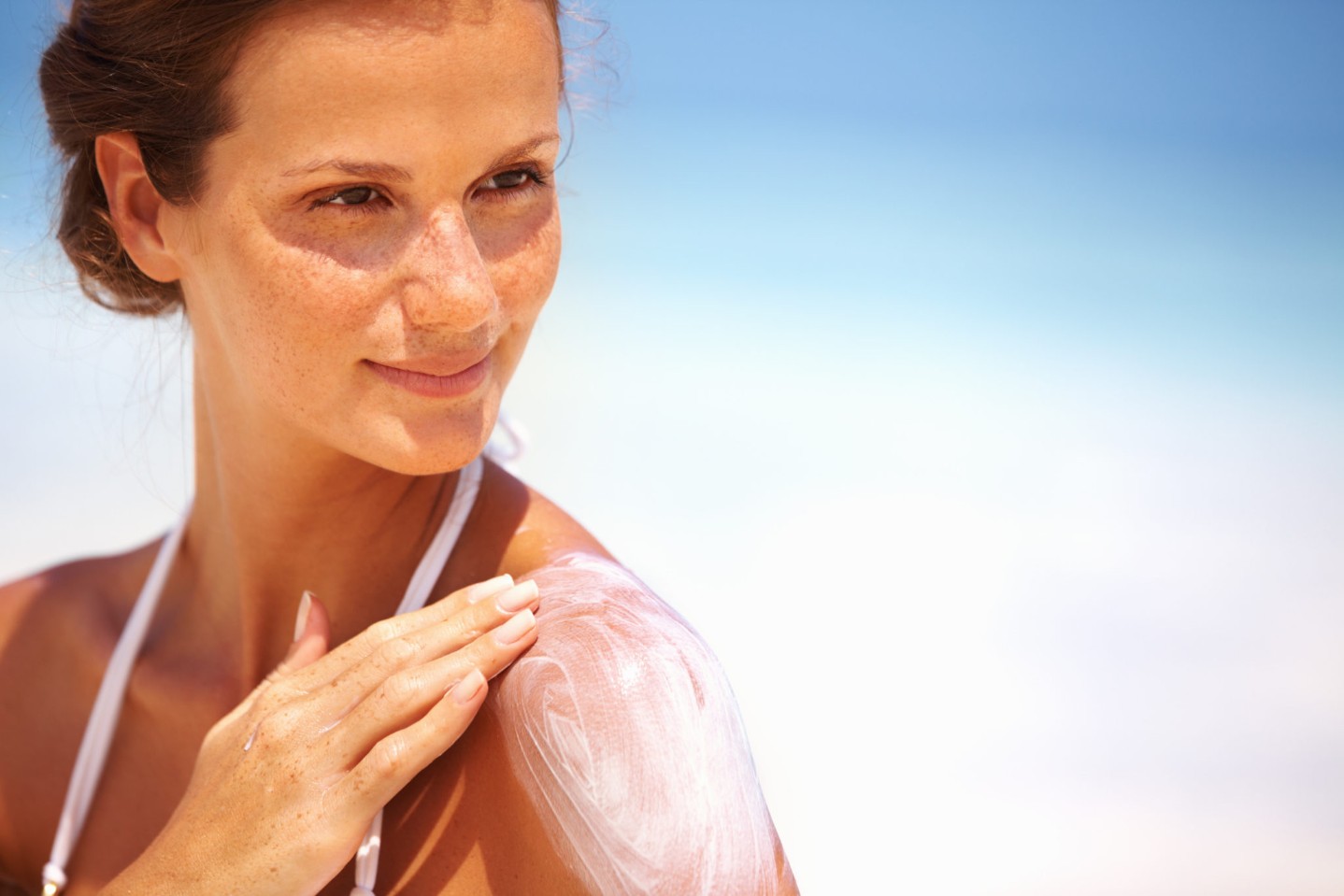The Gut-Bladder Connection: Nutrition for Optimal Function
JUN 11, 2025Proper diet is essential in maintaining bladder and bowel health as they affect your gut microbiome.
Read More
With 4th of July around the corner, it’s time for some fun in the sun. Staying safe in the sun this summer is important for your health today and for the future. One in five Americans develop skin cancer before the age of 70, and proper sunscreen care can greatly reduce the risk of these cancers. Choosing proper sunblock is an important aspect of self-care. There are several elements to consider when looking through your options.
When selecting an effective sunscreen it is important to find a “broad spectrum” sunscreen which can protect your skin from both types of dangerous UVA and UVB rays. Both UVA and UVB rays increase the risk of sunburn, ageing, eye damage, melanoma and other skin cancer risks. Most of the sun’s rays do come through the clouds, so even on cloudy days, sun protection is still an important consideration.
Sunburn protection factor (SPF) is a measurement of how much UVB rays are blocked. An SPF of 15 can block 93% of UVB rays where as an SPF of 30 can block 97% of UVB rays. The American Academy of Dermatology recommends using a broad-spectrum sunscreen of at least SPF 30. It is important to remember though, that no sunblock, no matter the SPF, can block 100% of UVA and UVB rays.
No sunscreen is completely “waterproof”, but some sunscreens can be “water-resistant,” offering 40-80 minutes of protection. The manufacturer recommendations are usually found on the bottle. Generally “water-resistant” sunscreens offer 40 minutes, and “very water-resistant” sunscreens can offer up to 80 minutes of protection. This is true for the kids in the pool and dad out sweating on the golf course. Each time someone towels off, sunscreen should be reapplied.
To properly apply sunscreen, you should apply it 15-30 minutes prior to being in the sun or getting in the water. Please note that many people do not use enough while applying. According to the American Academy of Dermatology, an adult should apply about 1 handful, or enough to fill 1 shot glass full, over the body. Reapplying every 2 hours, even on cloudy days, helps protect the skin properly. Remember to also reapply every 40-80 minutes in wet conditions. For proper use and lifelong protection, it is important to use sunscreen daily for all outdoor activities, not just in the summer and not just at the pool. In addition to proper sunscreen use, remember to avoid the sun during peak hours from 10 a.m.-4 p.m. Wearing tightly knit clothing, sunglasses and a wide brimmed hat will also go a long way in helping prevent skin damage.
Infants under 6 months old should not spend time directly in the sun. Instead, let them enjoy the outdoors in a shaded area, dressed in lightweight long sleeves, pants and a hat to keep their heads and necks covered. After 6 months of age, sunscreen can be applied to areas of the skin not covered by clothing. The American Academy of pediatrics recommends using a zinc oxide based sunscreen for kids as it is effective and is not absorbed through the skin. This is also a good option for others with sensitive skin.
So remember, when heading out to a BBQ, to the pool or out in the yard to work, you want to choose a sunscreen that is broad-spectrum, at least SPF 30 and water resistant. Sunscreen takes 15-30 minutes after application before its ready for use and reapplying every 2 hours, or 40-80 minutes while swimming, will help ensure maximum benefit from your product.
References:
American Academy of Dermatology. How to Select a Sunscreen. 2018 https://www.aad.org/public/spot-skin-cancer/learn-about-skin-cancer/prevent/how-to-select-a-sunscreen (Accessed May 23rd, 2019)
American Academy of Dermatology. Sunscreen 101: dermatologists answer burning questions about sunscreens. May 20, 2013. http://www.aad.org/stories-and-news/news-releases/sunscreen-101-dermatologists-answer-burning-questions-about-sunscreens (Accessed May 23rd, 2019).
American Academy of Dermatology. Sunscreen FAQs. http://www.aad.org/media-resources/stats-and-facts/prevention-and-care/sunscreens. (Accessed May 24th, 2019).
Centers for Disease Control and Prevention. Sun Safety Tips for Families December 12th, 2017 https://www.cdc.gov/cancer/skin/basic_info/sun-safety-tips-families.htm (Accessed May 30th 2019)
American Academy of Pediatrics. Sun Safety and Protection Tips from the American Academy of Pediatrics 2018, https://www.aap.org/en-us/about-the-aap/aap-press-room/news-features-and-safety-tips/Pages/Sun-Safety-and-Protection.aspx (Accessed May 31st 2019)
U.S. Cancer Statistics Working Group. U.S. Cancer Statistics Data Visualizations Tool, based on November 2018 submission data (1999-2016): U.S. Department of Health and Human Services, Centers for Disease Control and Prevention and National Cancer Institute; www.cdc.gov/cancer/dataviz,(Accessed June 1st 2019.)
Originally Published: June 2019. Revised: March 2023.

Proper diet is essential in maintaining bladder and bowel health as they affect your gut microbiome.
Read More
Injuries spike during the summer months but there are actions you can take to prevent injuries during the 100 deadliest days of summer.
Read More
Prioritize your vocal health with these practical vocal hygiene tips to improve communication and overall well-being.
Read MoreWhen you need local health information from a trusted source, turn to the CHI Health Better You eNewsletter.